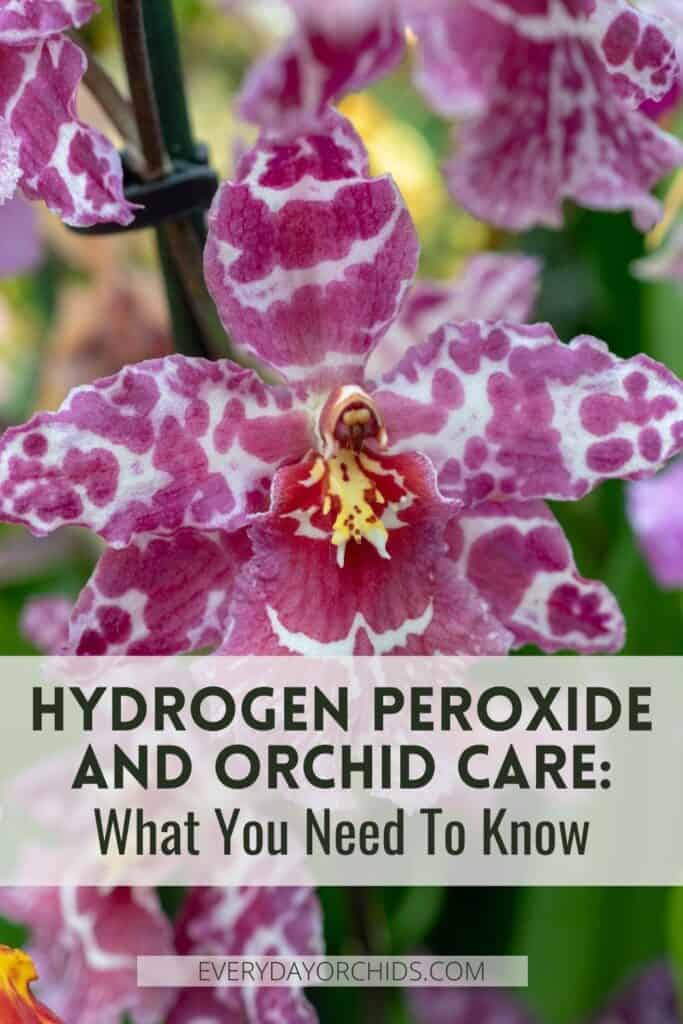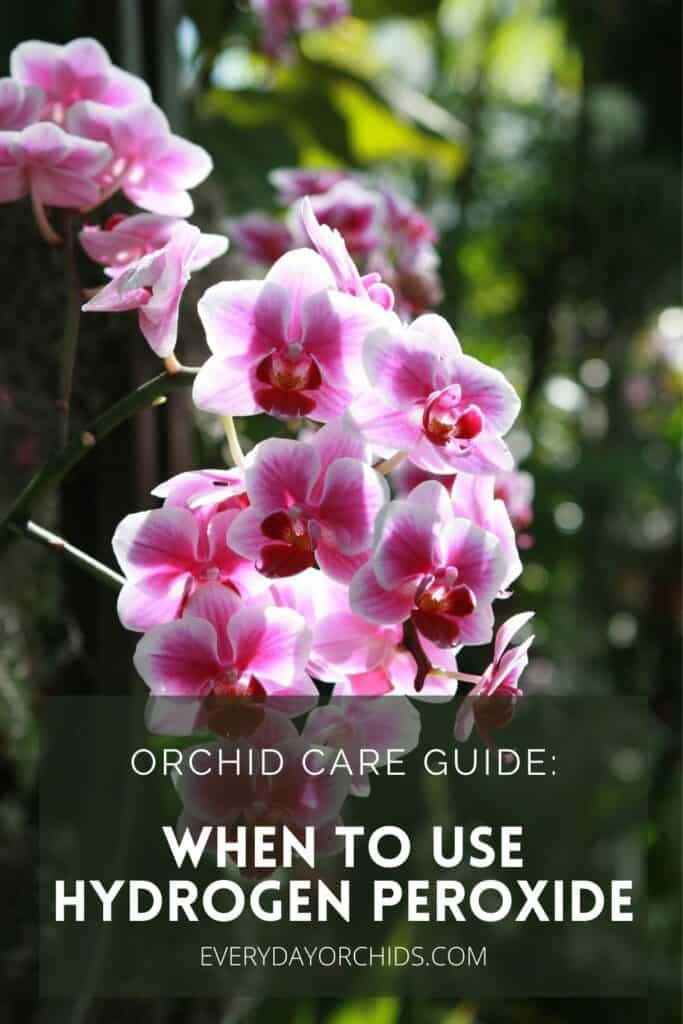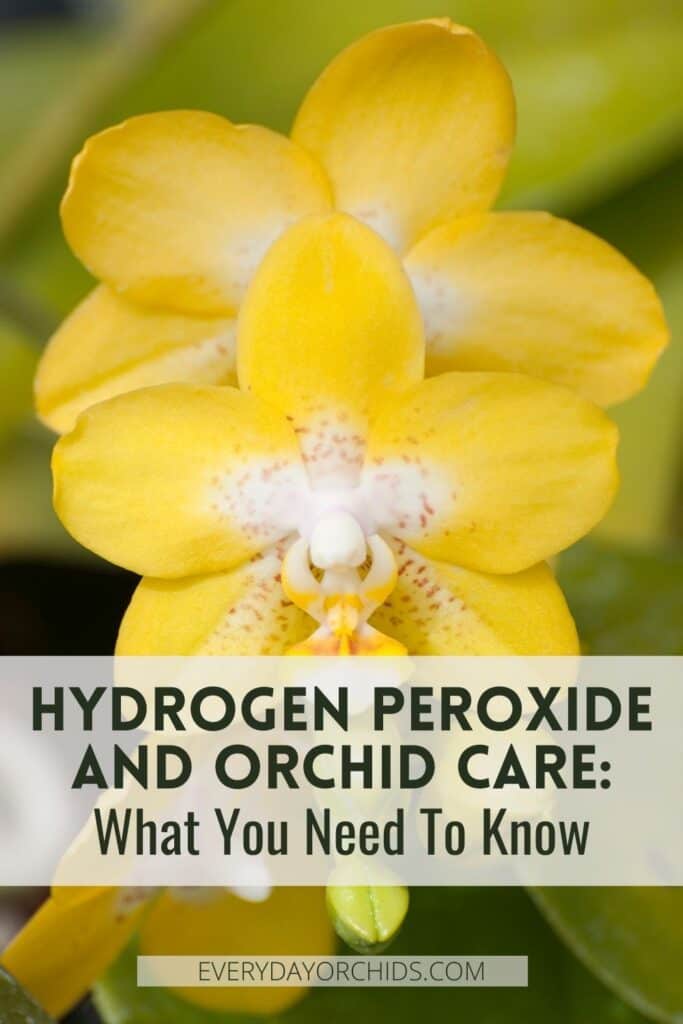For better or worse, orchid growers have been using hydrogen peroxide in their orchid care for years. The thing is, there are times when you should use hydrogen peroxide on your orchid, and other times when you really shouldn’t.
How do you know when it is appropriate to use hydrogen peroxide in your orchid care? The answer to that depends on why you might be wanting to use hydrogen peroxide on your orchid and what you will be using it for. I’ll explain more below.
Hydrogen peroxide can be effectively used to treat crown rot, deal with fungal gnat infestations, and disinfect potting media. It can also used in hydroponics. Contrary to popular belief, however, hydrogen peroxide should not be used to treat root rot or fungal infections within the orchid’s root system.
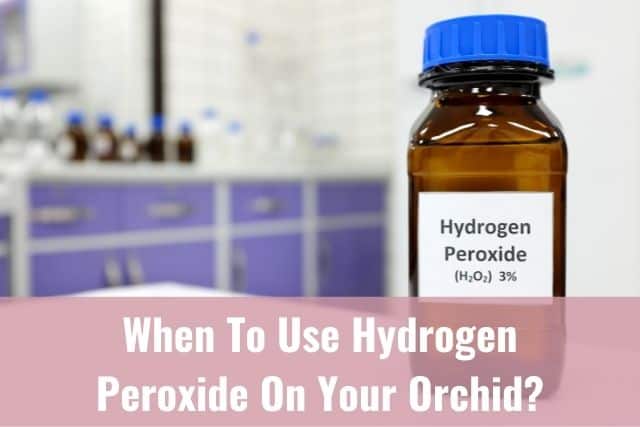
I’ll take a deeper look into the use of hydrogen peroxide on orchids in this article. I’ll go over how to use hydrogen peroxide on your orchid, when it is appropriate, and when it is not. Knowing what to do is important when caring for your orchid. Keep reading to learn more.
Please note that these links are affiliate links and as an Amazon Associate, I earn from qualifying purchases. Purchases made through affiliate links in this post may generate commissions at no additional cost to you. Use this link for a discounted Amazon Prime trial. Thank you for your support!
Table of Contents
Should You Use Hydrogen Peroxide To Treat Orchid Root Rot?
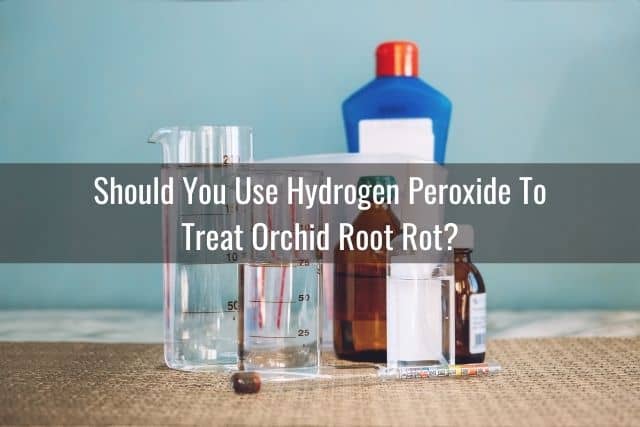
Hydrogen peroxide is sometimes touted as an anti-fungal treatment for orchids, particularly for orchid roots suffering from root rot. The idea is that hydrogen peroxide is an anti-microbial agent. This means it blocks pathogens and micro-organisms from settling on the orchid.
So, some orchid sites may recommend using hydrogen peroxide on orchid roots as a method to deal with root rot.
They may say something along the lines of, “spray 3% hydrogen peroxide over your orchid roots to kill bacteria and fungus.” Don’t do it. Don’t soak your orchid roots in hydrogen peroxide to try to disinfect them either. Bad idea.
The problem with this is that hydrogen peroxide can harm orchid roots. Remember, orchid roots are surrounded by a layer of velamen. Velamen is critical for allowing the root to absorb water and nutrients. Without the velamen, the orchid root is essentially dead.
Hydrogen peroxide, when it comes into contact with the velamen, breaks it down and impairs its function. In other words, hydrogen peroxide damages the orchid roots. It is not an effective way to treat orchid root rot.
In fact, hydrogen peroxide can cause the velamen and root tissue to start to die off, leading to more rot. This only exacerbates the original problem. If your orchid does have root rot, check out this article about root rot on my site Everyday Orchids. There, I talk in more detail about how to treat root rot and how to prevent it from happening again.
Instead of using hydrogen peroxide to treat root rot, do this instead: Cut off all the dead, rotted roots using sterilized gardening shears. Then, use a fungicide, such as Physan 20, to treat the fungal infection that might be causing the rot. Repot the orchid in new orchid potting media. Most importantly, don’t overwater your orchids, as this is the number one cause of root rot.
Use Hydrogen Peroxide To Treat Orchid Crown Rot
Instead, the one of the few situations in which I’d use hydrogen peroxide on an orchid is when the orchid has crown rot. Hydrogen peroxide is a known and tested treatment for orchid crown rot. In the past, I myself have used 3% hydrogen peroxide to treat crown rot in my orchids with good results.
In this scenario, you would pour a small amount of 3% hydrogen peroxide into the orchid’s crown. The hydrogen peroxide will bubble and fizz and kill the fungus/bacteria that is infecting the crown. You would want to continue doing this every couple of days until the hydrogen peroxide no longer bubbles or fizzes.
Once this happens, switch over to ground cinnamon to continue addressing the crown rot. I go into more detail about how to treat crown rot in another article. There, you’ll get a step-by-step guide to dealing with crown rot in orchids, so be sure to check that out.
To prevent crown rot from happening in the first place, your best bet is to water your orchids the right way and avoid getting water in the crown.
If you find that you are losing orchids to crown rot, read this guide about how to water your orchids. If your orchids are potted in moss, here is a guide on how to water your orchids in moss. The watering technique is slightly different based on the potting media, so read the guide that is most applicable to your orchids.
Once I changed how I watered my orchids (this was years ago), my orchids stopped having crown rot. In fact, I haven’t had to deal with crown rot in my orchids for over a decade, but when I did, hydrogen peroxide did help to treat it. Please check out those resources above if crown rot is a recurring issue for your orchids.
Use Hydrogen Peroxide To Kill Fungus Gnat Larvae In Your Orchid’s Potting Media

Another application of hydrogen peroxide with relation to orchids is to kill fungus gnat larvae. Fungus gnats are orchid pests that are notoriously hard to get rid of.
Part of the reason why fungus gnats are so difficult to get rid of, aside from the fact that they are tiny and can fly, is that the larvae can easily hide in the potting media. The fungus gnat larvae are very small and difficult to see.
The best way to deal with a severe fungus gnat infestation is to repot your orchid. But sometimes you need to slow down the population explosion until you can get to repotting. To do this, use hydrogen peroxide.
Fungus gnats typically lay their eggs in the superficial area of the potting media. To kill off fungus gnat larvae hiding in the potting media, mix one part hydrogen peroxide with four parts water in a spray bottle. Spray this mixture over the top of the potting media. Do this at least once a week until either the fungus gnats are gone or you have repotted your orchid.
Spraying hydrogen peroxide on the potting media can work to kill the fungus gnat larvae to some degree. However, the best treatment for a fungus gnat infestation is to repot the orchid entirely. Be sure you use new orchid potting media when you do repot. If you have fungus gnats infesting your orchids, check out this detailed guide to eliminating fungus gnats from your orchid.
Use Hydrogen Peroxide In Hydroponics
Hydroponic growers often use hydrogen peroxide in their hydroponic garden to help boost plant growth. Namely, hydrogen peroxide is used to keep the water clean, increase oxygenation, and neutralize the chlorine found in the water.
If you are growing plants in hydroponics, you’ll need to use a higher concentration of hydrogen peroxide than the typical 3% found in drugstores. Online, you can find a 12% hydrogen peroxide. Higher concentrations of hydrogen peroxide can be caustic, however, so use caution when handling and wear gloves.
For more information, check out this hydroponics article by Seeds and Spades. There, she talks about how to use hydrogen peroxide in your hydroponics growing. You can grow orchids in hydroponics and semi-hydroponics, but this is more suited for the experienced orchid grower.
Use Hydrogen Peroxide To Disinfect Potting Media
When repotting your orchids, you would obviously throw away any old potting media and use new potting media. But, what do you do if the new bag of orchid potting media has signs of mold or pests when you open it? In my opinion, the best thing to do is throw it away and buy a new bag.
However, maybe you want to salvage the potting media for some reason. Perhaps the garden center ran out of orchid potting media or they’re closed for the day, and you absolutely have to repot your orchid today. Maybe you spent your last dollar buying this bag of questionable potting media.
Another application for 3% hydrogen peroxide is to disinfect new orchid potting media, though I will say, this practice is debatable. It may not work very well since the hydrogen peroxide starts to break down quickly. In fact, it breaks down so quickly that it might be ineffective at disinfecting the organic media. I am still including it as a potential use for hydrogen peroxide, however, since some people do use this method as part of their orchid care, or have heard about it and want to know more.
To use hydrogen peroxide to clean orchid potting media, put 3% hydrogen peroxide into a spray bottle. Spread out the orchid potting media on a tarp or newspaper and thoroughly spray down the potting media with the hydrogen peroxide. Let it dry fully before you use it to repot the orchid.
I do want to say again, however, that I really don’t recommend trying to salvage questionable orchid potting media. It’s a lot of work and takes precious time. It may not even be that effective. You might save a few dollars, but there’s a good chance you’ll end up dealing with pest and disease problems later on due to the contaminated potting media.
When I come across a bag of contaminated or questionable potting media, I throw it away and don’t use it, even if it is new. To me, the risk of using it and the hassle of disinfecting it is not worth the few dollars I’d save. In addition, although using hydrogen peroxide to disinfect potting media has been done by others, I cannot vouch for it’s effectiveness.
There are a few other ways to disinfect and clean orchid potting media, including boiling and sterilizing it. I go over the ways you can sanitize and prepare orchid potting media on my blog, so check out this article about orchid potting media for more information.
Use Hydrogen Peroxide To Extend The Life Of Cut Flowers

Last but not least, did you know you can use a little bit of hydrogen peroxide to keep your cut blooms lasting longer? This applies if you have cut orchid blooms in a vase. By using a little bit of 3% hydrogen peroxide mixed into the water, you can extend the life of these blooms.
Just add a drop or two of 3% hydrogen peroxide to the water in the vase. You’ll also want to add a bit of sugar and mix well. The sugar provides “food” for the cut flowers, while the hydrogen peroxide maintains the cleanliness of the water. Hydrogen peroxide also has the added benefit of increasing oxygen available to plants.
You can read more about how to care for cut orchid flowers here.
Final Thoughts
Hydrogen peroxide can be used in orchid care under specific situations, as I outlined above. I have used 3% hydrogen peroxide to treat orchid crown rot, to extend the life of cut blooms, and to kill fungus gnat larvae.
For what it’s worth, when I was first new to orchid growing, I used to use hydrogen peroxide to treat root rot, based on things I read online. However, I don’t use hydrogen peroxide on my orchid roots anymore and haven’t for years. This is because I found that hydrogen peroxide actually caused damage to my orchid’s roots and slowed its growth. So, I would recommend NOT using hydrogen peroxide to treat orchid root rot or address root problems. This can harm your orchid instead of helping it.
Also, keep in mind that hydrogen peroxide starts to degrade once the bottle is opened and is exposed to air. If you are reaching for an old, opened bottle of hydrogen peroxide, be aware that it may not be as effective as a brand new, unopened bottle.
All that said, I hope this information has helped you decide whether you should or should not use hydrogen peroxide in your orchid care. As always, happy orchid growing!
If you enjoyed this article, please pin it and share!
